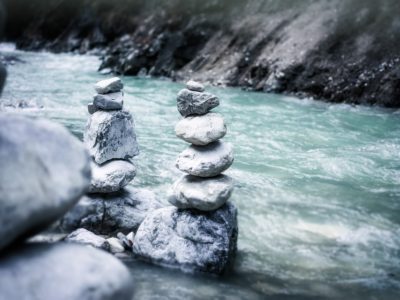4 Symptoms of Blocked Drainage & Resulting Problems
As the weather gets colder and the rain pelts the lower mainland day after day after day, a sudden surge of stormwater can sneak up on you and have devastating effects on your home.
…except the only part of that sentence that’s a lie is the sneaking up part.
When your stormwater drainage from your house is blocked, water only has one place to go: back into your basement, crawlspace or main floor and it’s not like it happens too quickly for us to take action. Sure, a monsoon could swoop down and knock out power to your pumps, but normal Vancouver winters can be dealt with before any catastrophic issues bubble up by using the good ol’ eye test.
Here are five symptoms of poor drainage that require immediate attention. And the good news? You can fix these issues without spending any money (most of the time).
1. Spilling Eavestroughs
Before you get a harsh wakeup down the back of your shirt as you walk to your car in the morning, watch your eavestroughs for water spilling over where water should not be spilling over. The cause could be as simple as leaves blocking the flow or sediment runoff from your roof.
The Fix. Clear the blockage or check out the gutter screens made by our buddies at KR Gutter Systems.
2. Gushing Downspouts
In the same department as spilling eavestroughs we get gushing downspouts. Sometimes your downspouts simply can’t handle the volume of stormwater being forced through them and the water ends up flowing where it shouldn’t – over natural berms, past creeks and ultimately back toward your basement instead of well away from your house and out through your municipality’s drainage system.
The Fix. You could install a natural swale where your downspout meets the ground or add extra downspouts to help deal with the flow during heavy storms. More downspout problems & fixes.
3. Dirt Stains on External Walls
If you watch closely during a storm you’ll be able to see water streaming down the side of your house, but if you start noticing dirt and residue on external walls when the sun is shining then you have a problem. Either your eaves need to be patched or replaced entirely or you have a blockage.
The Fix. Washing your walls with a pressure soaker only treats the symptom and not the problem itself. Get up on a ladder and make sure your shingles and eaves are free and clear of debris.
4. Slow Flowing Surface Water
Once the rain has been around for a few weeks, plenty of residents in the lower mainland start to notice water collecting on their lawn, flowing slowly off or sticking around entirely. Puddles are no friend to your basement – there’s a lot more going on underground than you can see, so it’s important to keep your lawn as dry as possible.
The Fix. Divert the water with berms, swales or man-made ponds, or plant thirsty trees and plants to soak up the extra runoff. Your lawn could also be the victim of poor grading, in which case you’ll need to hire a landscaper (or pick up a shovel).
Owning a home means you’re in constant maintenance mode. But unless you’re planning above to Alberta (where you’ll have a whole new set of environmental challenges), consistent vigilance is the best way to prevent costly problems down the road.
Sure, we can help, but we’d rather you stayed dry all on your own.

